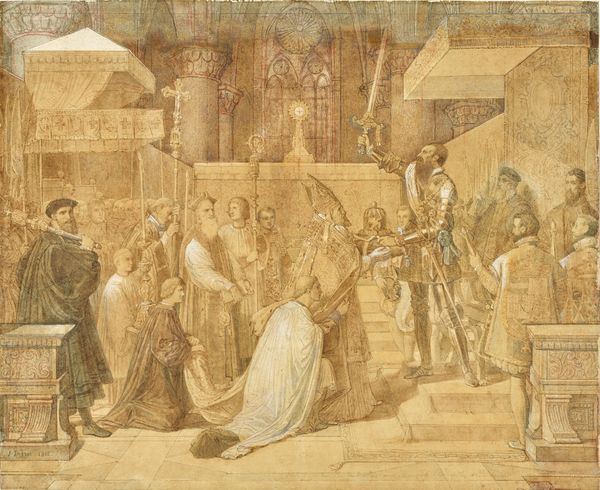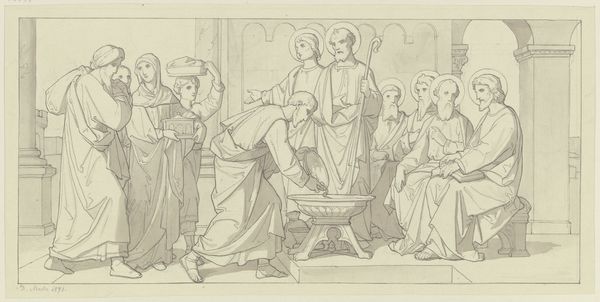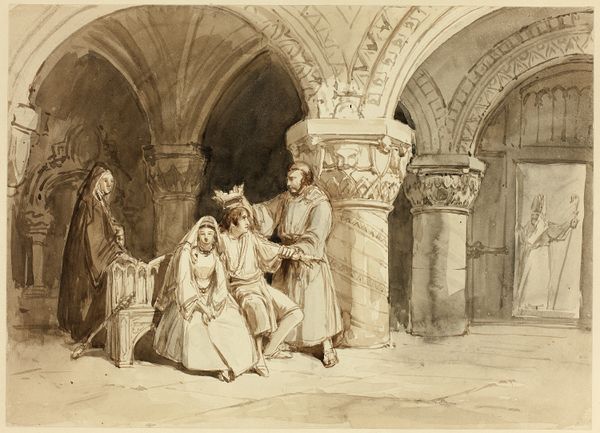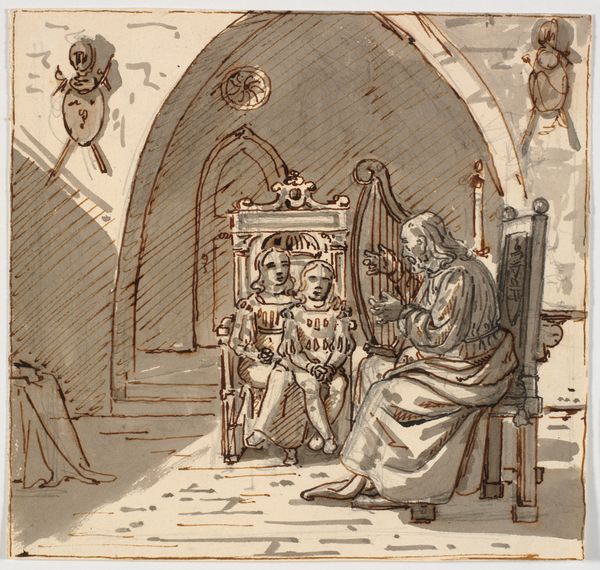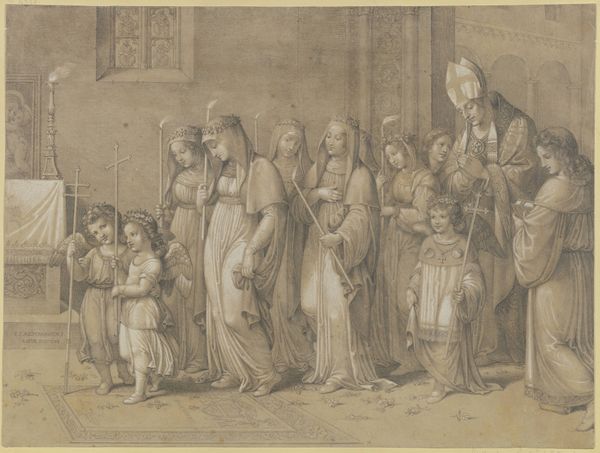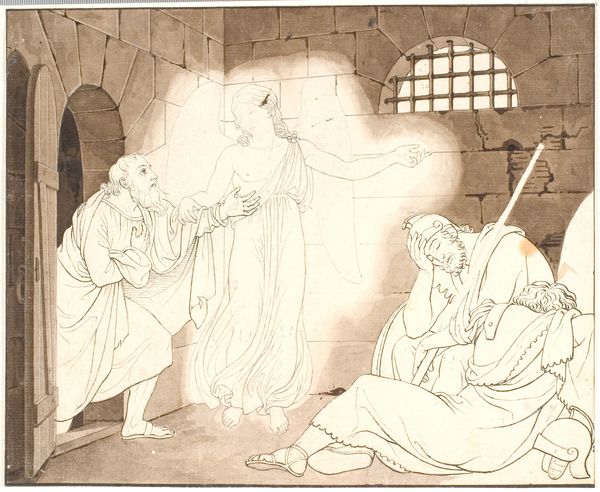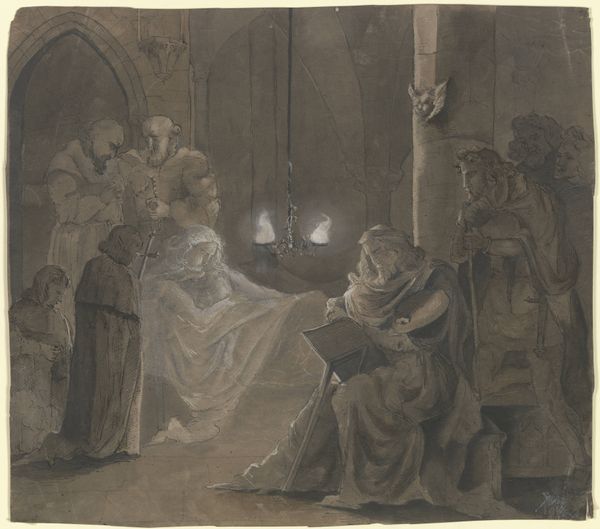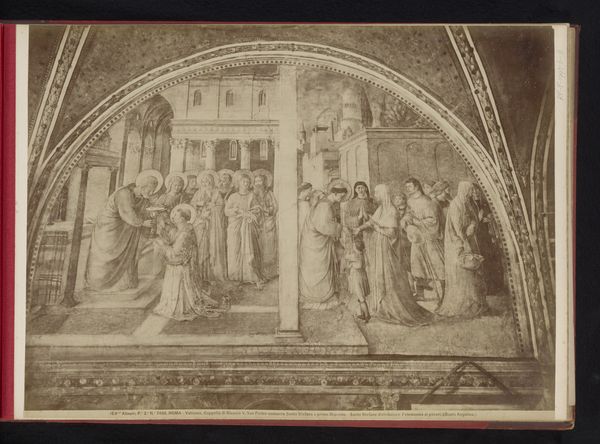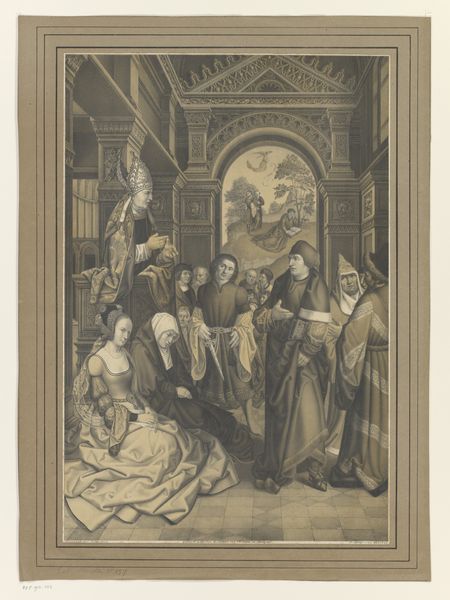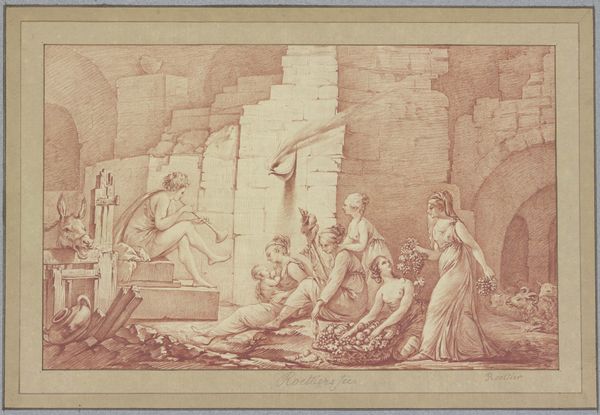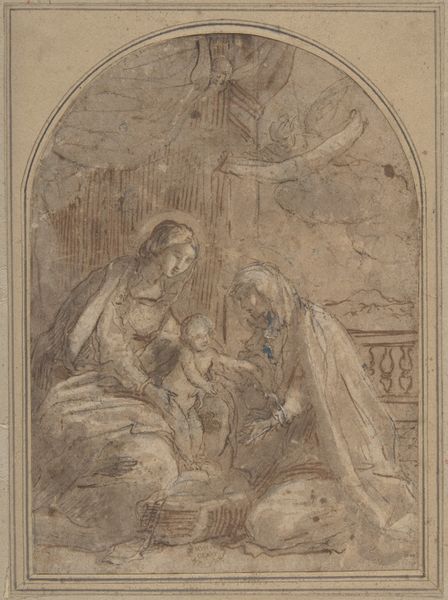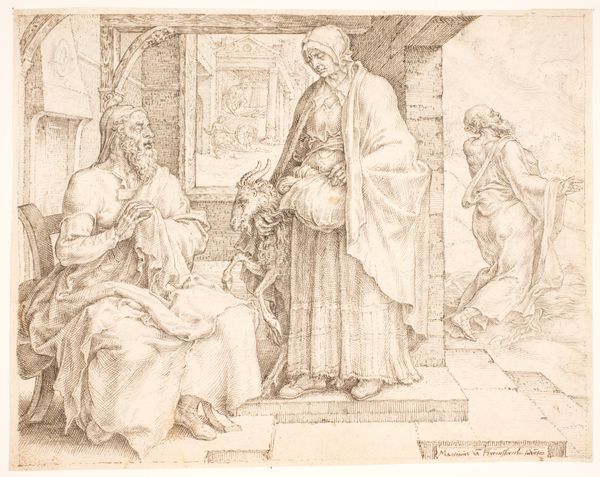
drawing, watercolor
#
portrait
#
drawing
#
watercolor
#
history-painting
#
academic-art
Dimensions: sheet: 44.77 × 63.82 cm (17 5/8 × 25 1/8 in.) mount: 48.9 × 69.22 cm (19 1/4 × 27 1/4 in.)
Copyright: National Gallery of Art: CC0 1.0
Editor: This is Emanuel Leutze’s “Study of Courtesans,” a watercolor and drawing from around 1840 to 1850. I’m struck by the sketch-like quality, it feels very immediate and raw. What are your initial thoughts on this piece? Curator: My focus goes directly to the process. We see a layering of intent and execution. The drawing medium lays bare the understructure – the social framework of production, if you will. Watercolor then tints the scene, selectively adding to this framework but not concealing the means of making, of its production. Editor: So, the way it's made, the choice of materials...that tells a story in itself? Curator: Exactly. Consider the cost of materials like watercolour in the mid-19th century. Its accessibility compared to, say, oil paints. This tells us something about the intended audience, doesn’t it? About the status of 'history painting' itself in relation to other artforms at the time. What impact would cheap, mass-producible material have on fine-art culture? Editor: I see, it sort of democratizes the historical narrative? Curator: In a way, yes, which makes one think about labor and consumption, challenging our own biases. And what do you think Leutze might be trying to say by foregrounding figures typically sidelined in heroic historical narratives? Editor: So, by revealing the 'scaffolding,' it lets us question the hierarchy and production of historical narratives themselves. Fascinating! I will have to think more about that aspect when viewing art. Curator: Precisely. Seeing art through this lens allows us to really delve into its cultural and socio-economic implications. A productive shift, I believe!
Comments
No comments
Be the first to comment and join the conversation on the ultimate creative platform.
